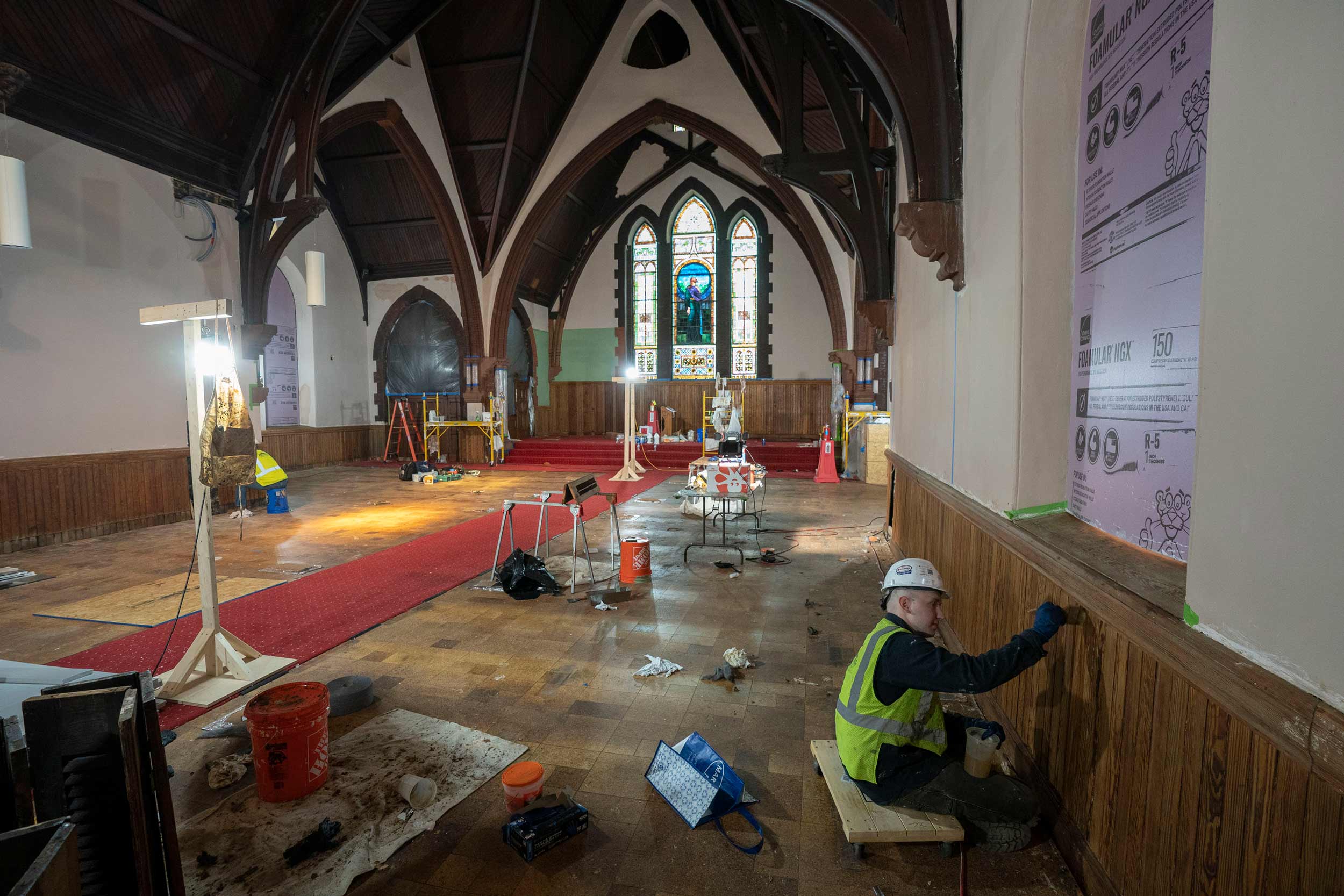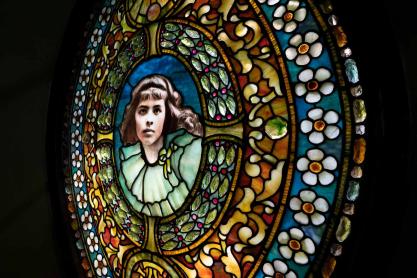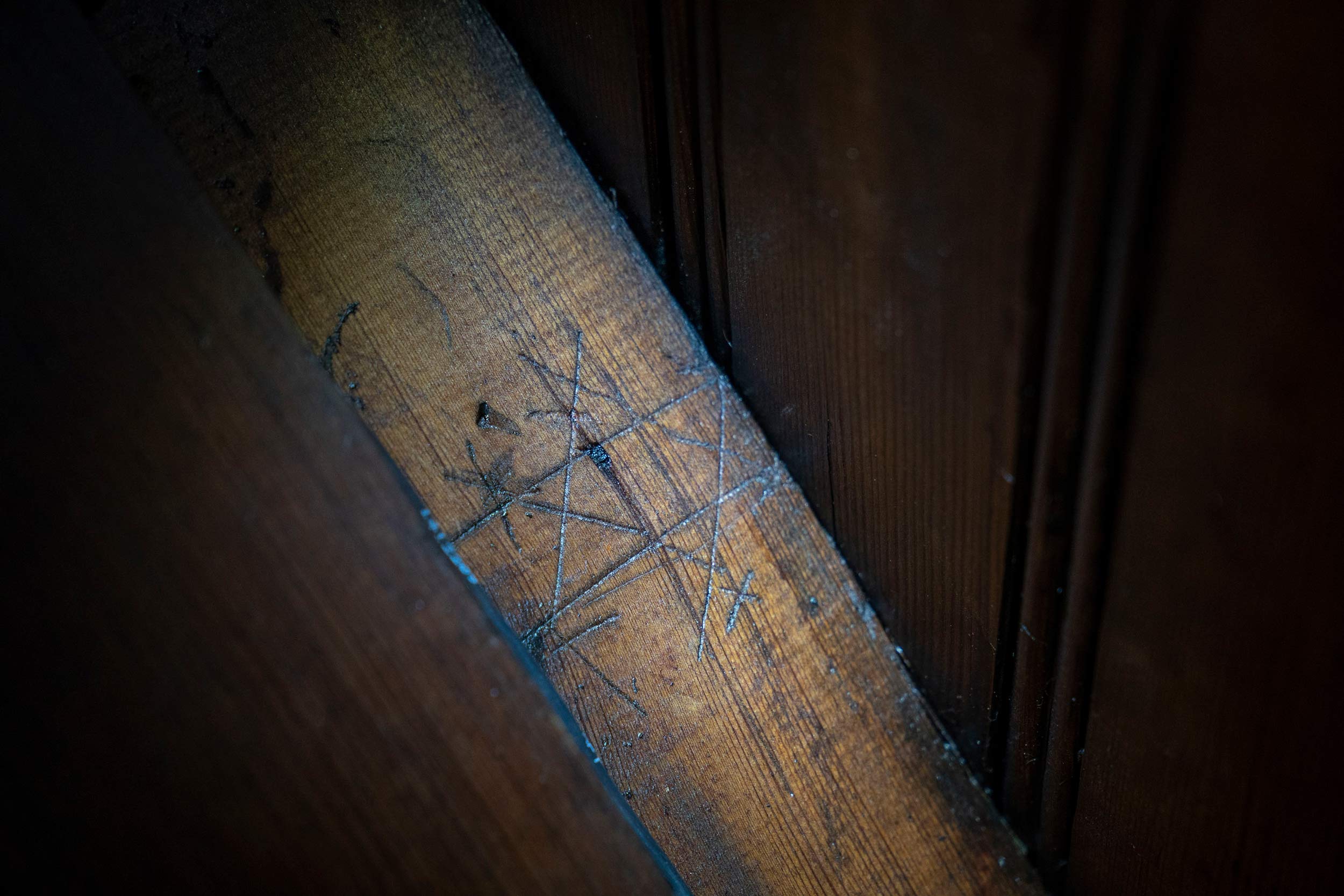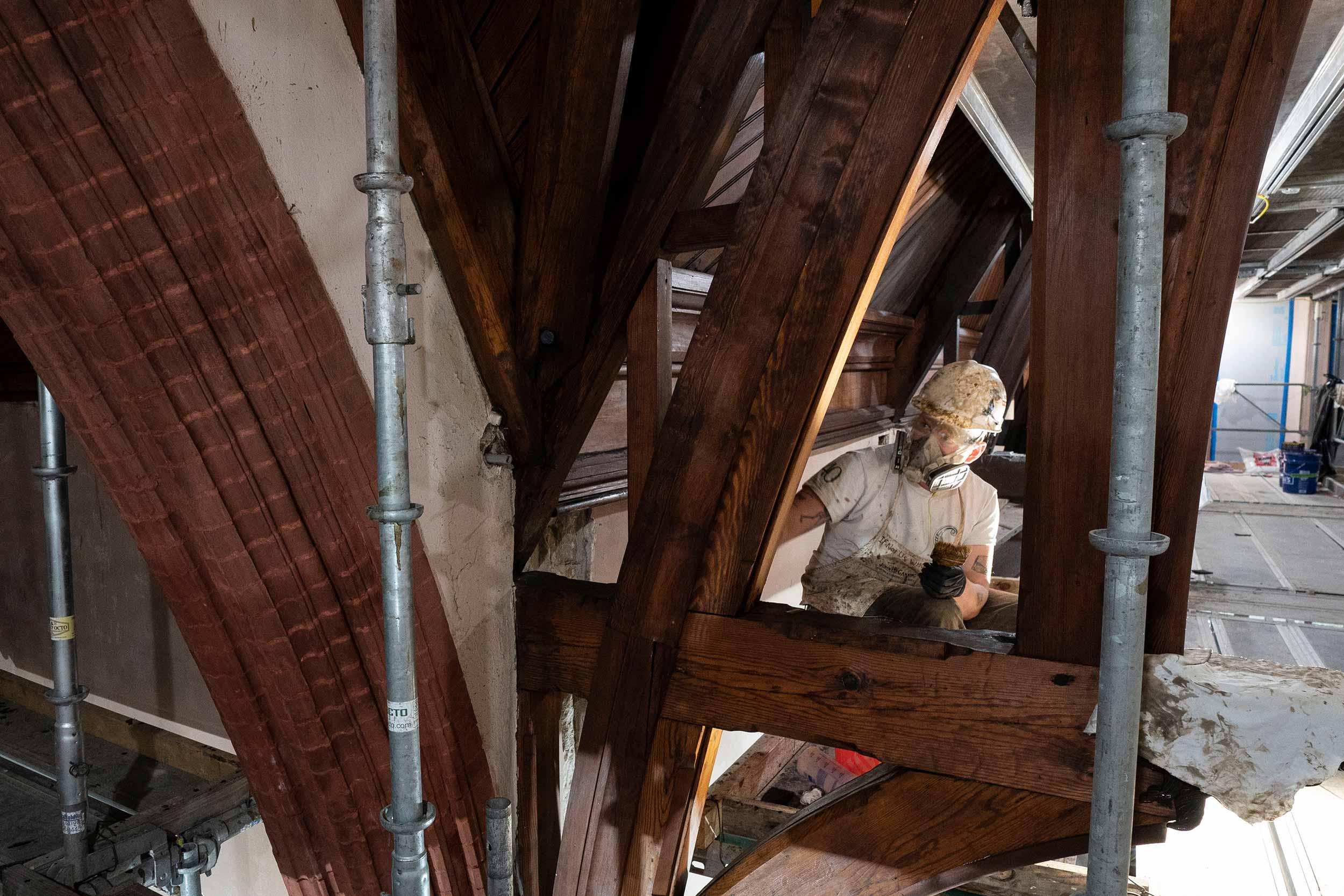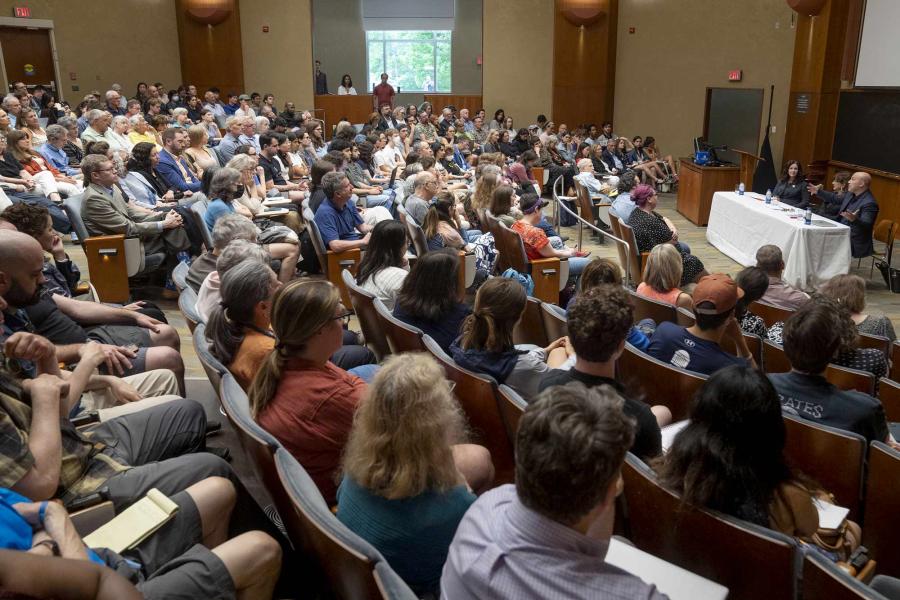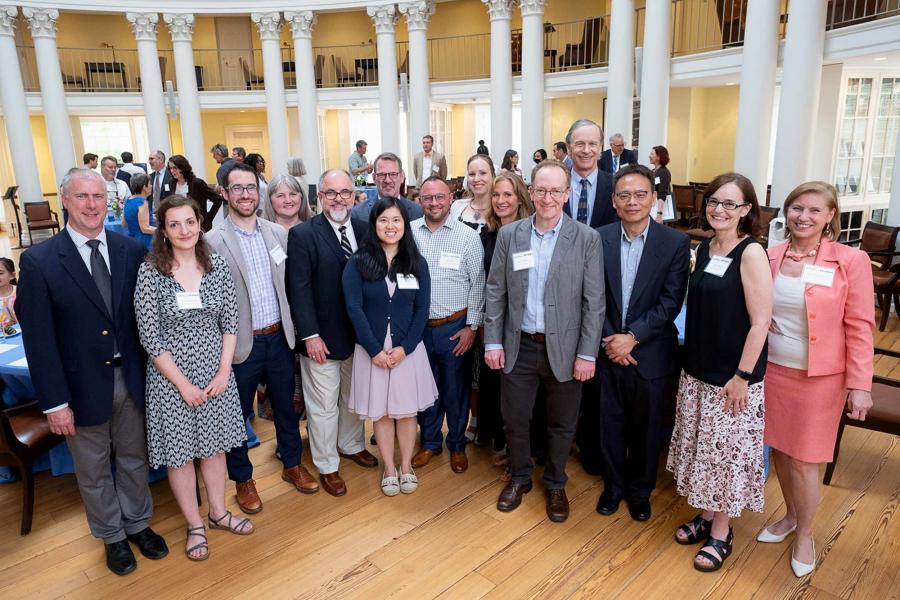Either way, there’s no firm explanation from either UVA experts or the renovators. Among those leaning to the more exotic explanation are the craftsmen helping refurbish the chapel.
“Our conservator discovered some interesting hex marks on one of the wooden trusses,” said James Zehmer, senior historic preservation project manager at UVA Facilities Management.
Ethan Minkema, a conservator working for John Canning Co., historic restoration and preservation experts based in Chesire, Connecticut, discovered the scrawl. The markings, only found in one place in the chapel, are about the diameter of a baseball.
Minkema’s father, Ken Minkema, a religious historian at Yale Divinity School, said the marks were similar to ones coming from Scots-Irish building traditions.
“These are the sort of markings that are often meant to ward off evil spirits or bewitchment and generally to protect the building,” Ken Minkema said. “This is an ancient practice and not one restricted to Europeans alone. Since this was more of a popular practice, I would conjecture that a carpenter or joiner made the marks, rather than a foreman or architect.”
Ken Minkema wrote a short paper, “Hexfoil Markings in Early Modern Structures,” in which he noted that the most popular practices were “apotropaic,” or preventive and protective, to ward off or nullify any attempts by evil forces to curse, bewitch or possess.
“Still another form of apotropaic magic was the use of diagrams,” Minkema wrote in his paper. “These markings have been found in buildings dating from the 17th to the 19th centuries and ranging from Scandinavia to England to the United States. Commonly, they appear to be no more than a series of hash-like, overlapping incisions in a geometric pattern, probably made with a knife, draw blade or rasp, usually engraved in a rafter, beam or sheathing.”
